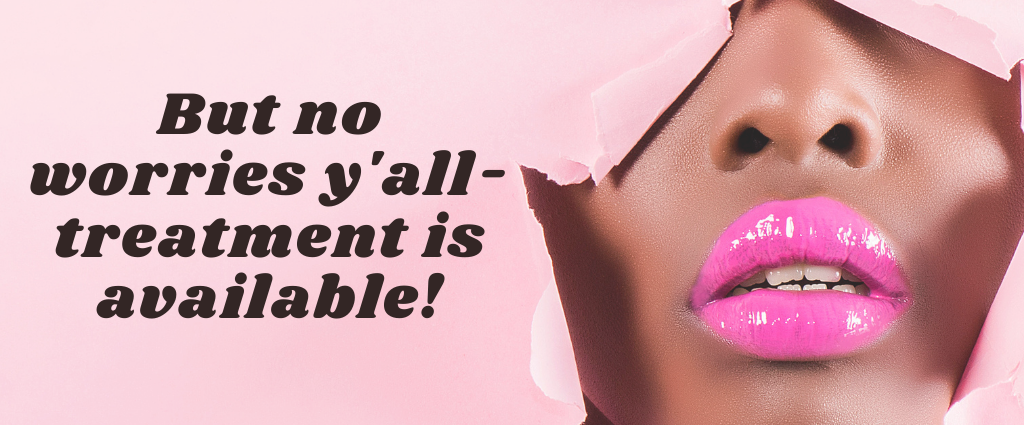
By: Jennifer McMillen Smith, LISW-S, HIV Social Worker at MetroHealth Medical Center and medically reviewed by Ann K. Avery, MD, Infectious Disease Physician at MetroHealth Medical Center
I’m willing to bet there’s been a moment in the last year that stressed you out, had you shook – at least once. I mean, we’re living during a pandemic. Stress is natural, and it happens to us all. The degree and the timing of the stress differs, but when it hits, hold on for a bumpy ride. That bumpy ride doesn’t have to include acne and skin rashes; however, nothing is 100% certain. But we want to help support you in managing stress while also keeping on point.
Things are at an all-time high. Everything is ramped up to greater levels from money worries to how to leave the house for a simple outing without coming back with a virus, and even scheduling a vaccine shot. First, we want you to know we understand. Second, it’s not your fault. Third, if it’s affecting your skin, let’s blame hormones and make a plan.
Let’s break it down for you. When feeling stressed and anxious, the body releases hormones to serve as a back-up to the defenses. This includes cortisol. Cortisol and other hormones activated during stress can cause inflammation. This leads to flare-ups in the skin in a lot of cases. Then, boom, a lovely pimple at the worst time.
It’s also important to know, stress doesn’t automatically produce acne and acne doesn’t only come from stress, however, stress is a nice welcome mat for acne. Pimples, blackheads, whiteheads, and acne breakouts are not friendly or considerate. It’s hard to predict when they may come creeping along. It may be stress, high anxiety, or just the times. We are one year deep into this shelter in-place/quarantine. Feelings can go from sad, disenchanted, and hopeless to hopeful, excited, and relieved from day to day.
And with the ups and downs, our typical skincare routine can fall off. We may stop applying a face mask in the evenings and go without drinking much water. This will have effect on your skin too. And don’t get us started on “maskne” - yes it’s a real thing – wearing a mask is great protection from Covid-19, but can cause blemishes. ☹

Acne may leave you feeling powerless, but we have several recommendations:
- Sleep -- Trust me, the grind will continue, but you’re not a machine and aren’t meant to go without rest! Sleeping allows for the body’s cortisol (stress hormone) levels to return to normal. Try to get at least 7-8 hours of solid sleep nightly to curb those inconvenient pimples.
- Reset your schedule and prioritize eating and exercise -- Try to switch up your routine a bit and add more green, leafy vegetables to your daily meals. Also, try to get some physical activity popping. This could include stretching, biking, walking, weightlifting, or swimming. The key is finding what works for you and start.
- Drink water. You can’t go wrong with a few glasses of water each day. Water helps regulate the body and helps flush out toxins in the body.
- Less screen time. Have you been on your phone more than usual during COVID times? It’s okay, what else is there to do when you’re stuck at home? It may feel like that’s the only thing keep your preoccupied right now, but there are other things you can do to not be bored. If staying informed on current events is important to you, try to get it in a 30-minute chunk then turn off the TV or stop refreshing those social media timelines.
- Go outside and get fresh air. Ever notice how fresh air can bring immediate ease? Get plenty of outside time when you can (Don’t forget the sunscreen! Experts recommend wearing a light moisturizer with SPF 30 every day.)
- OTC acne treatments help. Head over to your local pharmacy and look for over-the-counter (OTC) acne products. Experts recommend trying something containing benzoyl peroxide first, at the lowest strength. This can help minimize redness & dry skin. Try salicylic acid if the benzoyl peroxide isn’t cutting it. Apply just to problem areas.
It might not be acne.
Another issue to be aware of is called Molluscum contagiosum. It’s a viral infection that causes a mild skin rash. The rash looks like one or more small growths or wart-like bumps that are usually pink, white, or skin-colored. The bumps are usually smooth and shiny. They look like pearls. This can come from direct skin-to-skin contact; in some cases, it’s passed from sexual transmission.
But no worries, y’all - treatment is available.
If you think you have Molluscum contagiosum, reach out to your doctor ASAP!
Shingles are another creepy foe. Shingles is also a viral infection, and it’s definitely not a fun affair. It causes a painful, blistering rash. Although shingles can occur anywhere on your body, it most often appears as a single stripe of blisters that wraps around either the left or the right side of your torso.
There’s no cure for shingles, but antiviral drugs can speed healing and reduce your risk of complications. The U.S. Centers for Disease Control and Prevention recommends individuals 60 years and older to receive the shingles vaccine.
I hope these tips are helpful. Best wishes on the glow-up.

